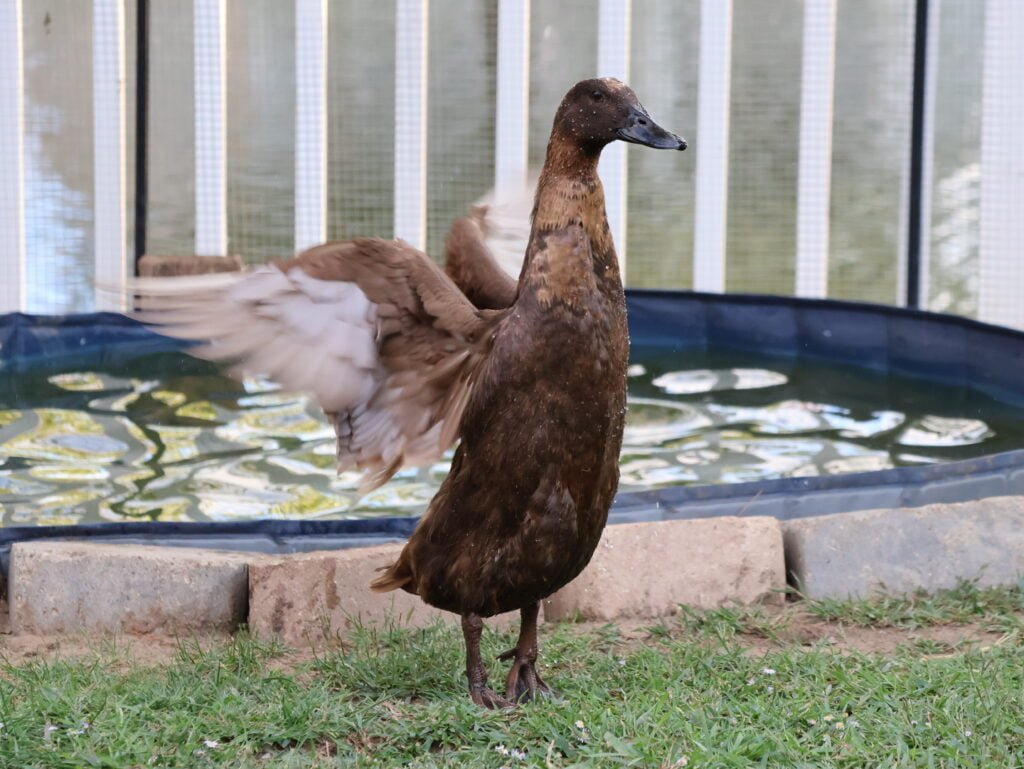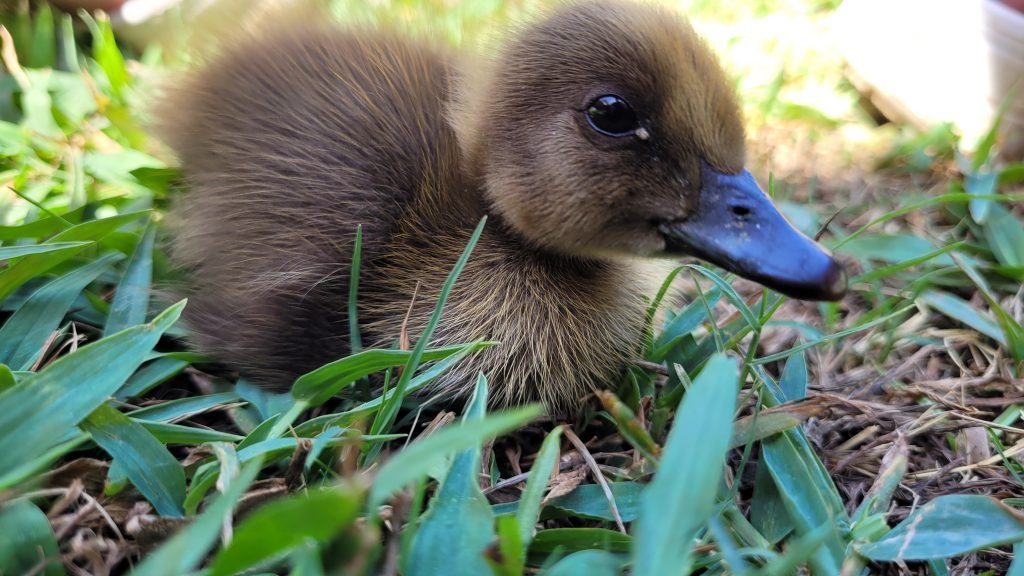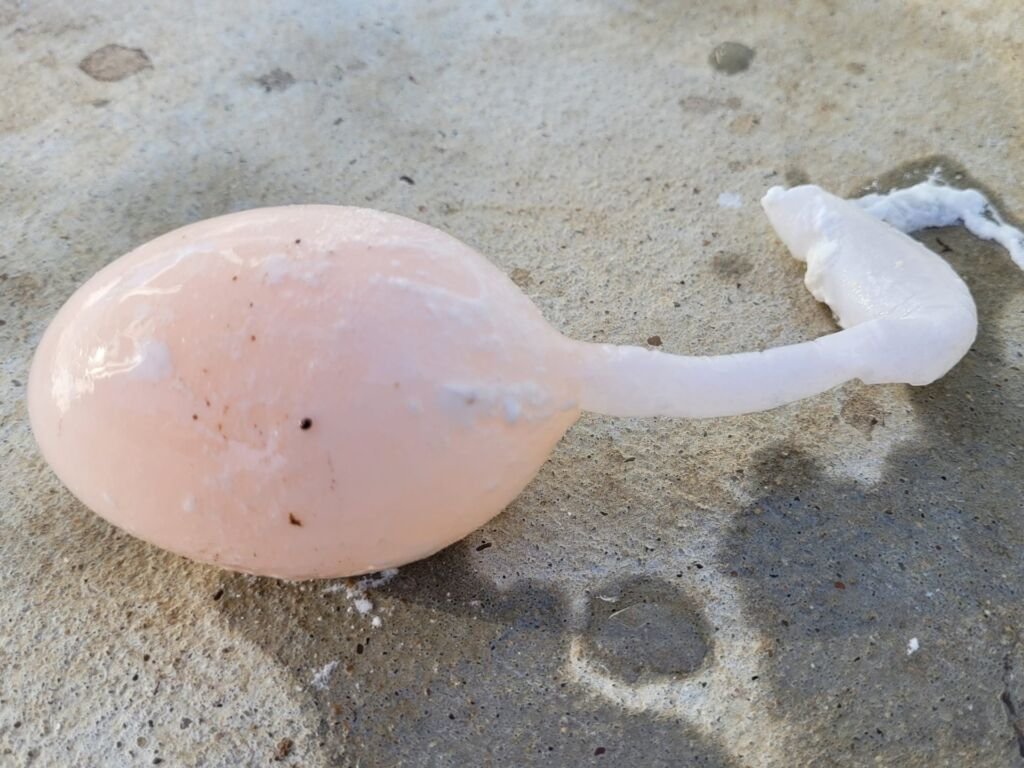Last updated on July 16th, 2024 at 06:23 pm
We have one Khaki Campbell duck ourselves, and her name is Krümel. She is the friendliest of all our ducks and enjoys interacting with us. If I could recommend one duck as a pet, Khakis would be my absolute favorite. But let’s learn a bit more about this duck breed.

History of Khaki Campbell Ducks
Our story begins in the late 1800s in England, where a visionary duck breeder named Mrs. Adele Campbell of Gloucestershire set out to create a duck breed with exceptional egg-laying abilities. Through careful crossbreeding involving Rouen, Runner, and Mallard ducks, Mrs. Campbell achieved her goal and introduced the world to the Khaki Campbell in 1898.
Named after their dedicated breeder and their distinctive khaki-colored plumage, Khaki Campbells quickly gained popularity for their prolific egg-laying ability and friendly demeanor. Since then, they’ve become a beloved favorite among duck enthusiasts worldwide.

In 1929, Campbells were introduced to the United States by Perry Fish of Syracuse, New York. Although acknowledged by the American Poultry Association (APA) in its American Standard of Perfection by 1941, their population remained low for several years. However, their fortunes shifted in the 1970s when the number of Khaki Campbells surged in the US. This increase was attributed to the rise of the back-to-the-land movement, an influx of Asian immigrants who favored duck eggs after the Vietnam War, and the introduction of a highly productive strain of Khaki Campbells in 1977.
Characteristics of Khaki Campbell Ducks
Now, let’s take a closer look at what makes Khaki Campbells so special:
- Size: Khaki Campbells are a smaller breed.
- Male Khaki Campbells typically weigh around 4-4.5 pounds (1.8-2 kilograms).
- Female Khaki Campbells generally weigh slightly less, ranging from 3.5-4 pounds (1.6-1.8 kilograms).
- Average Lifespan: Khaki Campbells have a lifespan of approximately 7 to 10 years when provided with proper care and a healthy environment.
- Egg Production:
- Female Khaki Campbells are prolific layers, with the potential to produce up to 340 eggs per year under optimal conditions.
- Their eggs are typically medium to large in size, ranging in color from white to lightly tinted.
- Adaptability: Khaki Campbells are highly adaptable to various climates and environments, thriving in both rural homesteads and urban backyard settings. As long as they have access to water for swimming and foraging opportunities, Khaki Campbells are happy campers.
- Broodiness: Unlike some other duck breeds, Khaki Campbells tend to exhibit minimal broodiness, making them excellent candidates for consistent egg production.
- Diet:
- Khaki Campbells thrive on a balanced diet consisting of duck pellets supplemented with fresh greens, vegetables, and occasional treats like grubs.
- Access to clean water for drinking and swimming is essential for their overall health and well-being.
- Temperament: Khaki Campbells are known for their amiable and sociable nature, making them excellent additions to any flock or family. They often enjoy interacting with humans and other ducks, displaying curious and playful behavior.
- Plumage: The plumage of Khaki Campbell ducks is quite distinct between drakes (males) and hens (females).
- Drakes:
- Mostly khaki-colored with a darker head, usually olive green, lacking the white ring of their Mallard ancestors.
- Lower back, upper neck, head, and tail culverts are a brown to bronze shade.
- Green bill and legs and feet that are usually a shade of dark orange.
- Hens:
- Ducklings:
- Regardless of gender, ducklings are dark brown to black with a small amount of white plumage in the breast area.
- Drakes:
- Environmental Impact:
- Khaki Campbells are efficient foragers and can help control pests like insects and snails in their environment.
- Their manure can be composted and used as a nutrient-rich fertilizer for gardens and crops.
- Heritage Status: Khaki Campbells are recognized as a heritage breed by organizations like the Livestock Conservancy, emphasizing the importance of preserving their genetic diversity and cultural significance.
- A Hint of Flight: Now, let’s address the almost-flying part. While they’re not skilled fliers like some wild duck species, Khaki Campbells are capable of short flights and impressive aerial maneuvers.
- Relatively quiet: Compared to some duck breeds, Khaki Campbells are known for being less vocal.

With their friendly personalities, impressive egg production, and easy-care nature, Khaki Campbell ducks are a fantastic choice for backyard duck enthusiasts. So, why not give these charming feathered friends a try? You might just find yourself with a coop full of sunshine and a fridge full of delicious eggs! Khaki Campbells are sure to steal your heart.

Do you have any experiences with Khaki Campbells or fascinating facts to share? Drop them in the comments below and let’s keep the duck conversation quacking! 🦆💬




